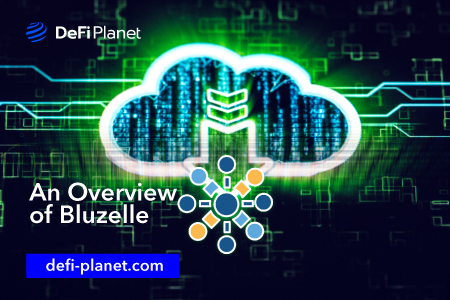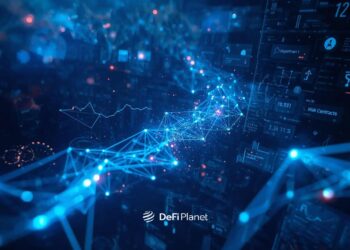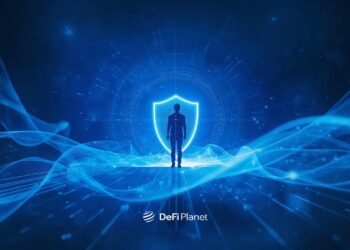Bluzelle may have started out as a decentralized database storage network that catered to businesses both in the traditional and decentralized worlds, but that is changing. Ever since it launched its version 2.0 in 2021, it has become a beehive of activities, churning out new innovations regularly, and partnering with other leaders in the crypto world. At the moment, it claims to have innovations of Filecoin, MongoDB, ChainLink, and IPFS all in one ecosystem, meaning that crypto users and brands do not have to utilize multiple platforms to enjoy these features.
When it started, Bluzelle offered a scalable and decentralized database solution to developers that were tired of using centralized data storage platforms because of bottlenecks like a single point of failure.
Bluzelle’s Participants
As a decentralized storage system, Bluzelle functioned because of different participants with varying functions attached to their roles.
Producers
The storage network and infrastructure used by Bluzelle are not owned by a single person. Different community members can offer their excess storage system to the network and earn rewards in return. Those that decide to lease out their unused computing power and storage space are called the producers. These services are usually accessed by developers, who pay the producers through the BNT token. Instead of additional computing power and storage lying fallow, producers could earn from leasing them out to intending users.
Before a user can become a producer, they have to stake a required amount of Bluzelle tokens, which are dependent on the level of service they want to offer. This is done to ensure that producers only offer top-notch services to consumers.
To motivate producers, a karma index was created, which acts as a leadership and ranking board. Those producers that offer poor services stand the risk of losing points on the index and their stake. A way that Bluzelle encourages producers to be more diligent is by allowing them to attach higher fees to their services.
Consumers
The second leg of participants in Bluzelle is called the consumers -they are developers, brands, and others that need extra storage space. Decentralized app developers can use this feature to their advantage. If the producer doesn’t offer the required service, the consumer is refunded.
Bluzelle Architecture
Bluzelle technology is different from the typical blockchains even though it incorporates some of their features.
Every blockchain-based platform has systems that ensure participants behave in ways that benefit it. Bluzelle created the Karma Index to breed integrity and act as a leaderboard. Those that occupy the top of the leaderboard system have a high level of Karma, meaning that they possess a great reputation in the ecosystem. These participants tend to enjoy incredible features and do not have to worry about the restrictions and penalties created for their counterparts with low karma ratings. Operators with high karma index can lead their swarm, which is a lucrative opportunity in the platform. A feature like this ensures that community members strive to increase their Karma index, thereby improving integrity and the operations of the platform.
Bluzelle allows a user to run multiple nodes, and the action of the user affects every node that they run. Ignoring the rules and trying to game the system can reduce one’s rating.
Before an operator can run a swarm, they have to be amongst the top 5%. A leader of a swarm has the power and responsibility that comes with the position. To be the leader of a swarm, an operator with a high karma level has to be elected by other operators.
Swarm in Bluzelle can be likened to nodes in a conventional blockchain. As nodes, they store the data in their network.
The data stored are grouped into swarms, which are stored in different parts of the world. As time goes on, the number of nodes in existence and the parts of the world that they reside in is altered, thereby improving scalability.
To ensure that data is not corrupted if a node in the swarm is no longer functional, the chain uses sharding, which replicates the data.
Every data stored on Bluzelle is encrypted and can’t be accessed by anyone, except the owner of the private key.
Bluzelle is designed in such a way that every node does not have a copy of every data, thereby offering high transaction speed.
When the consensus mechanism of Bluzelle is considered, it uses local consensus, which leads to fast transaction speed, unlike other blockchains that need overall consensus.
Swarming was unknown before Bluzelle introduced it to the blockchain one, and is geared at improving the performance of the ecosystem. Scalability is achieved through swarms because data is retrieved from the closest nodes. The Swarm concept also prevents unscrupulous elements from hijacking the protocol and updating it with wrong data. Every record is updated within Bluzelle through this process.
Privacy is an important element in Bluzelle, and it utilizes sharding, as well as cryptography to ensure that its ecosystem is not compromised by intruders and users’ data leaked. To further improve scalability, Bluzelle uses both vertical and horizontal scaling innovations. The latter is handled by swarms.
Bluzelle’s Tokens
Two tokens are available on the Bluzelle network, and they have different purposes.
BLZ
This is the token that can be purchased on exchanges, and it can be used by those that want to gain access to the network.
BNT
It can’t be accessed on exchanges because it is the internal utility token. Since it is not an ERC20 token like its counterpart, BLZ, it ensures that users can carry out affordable and fast transactions.
Bluzelle’s New Innovations
Bluzelle has evolved from being only a decentralized database solution to much more. According to its team, it offers the innovations noticed in MongoDB, File coin, IPFS, and ChainLink. It is also offering owners of NFTs an opportunity to store their files on the blockchain instead of centralized data storage systems.
With the Bluzelle 2.0 launched in 2021, the team did an overhaul of the entire system, including its brand identity.
Users can easily access data through Bluzelle oracles, which are designed to transmit reputable data. They can use cross-chain bridges to interact with Ethereum, Binance Smart Chain, and so on. Community members can easily stake, access file storage systems, while using the mainnet databases, all in one place.
Bluzelle and Its Web 3.0 Quest
The world is moving towards Web 3.0 and the innovations that it ushers. Bluzelle seems to be one of those platforms altering itself regularly to offer the best of Web 3.0. With Bluzelle, creators can easily decide what content they want to create, the ownership of their content, as well as enjoy the intense security that comes with the ecosystem.
When Bluzelle was launched initially, it had not spread its tentacles to offer services for NFTs, but that has changed. With the Bluzelle 2.0, NFT has become a major aspect of the platform. In the past, NFT files were stored on centralized storage solutions, not minding that the transaction history and other data concerning the creation, sales, and ownership of the Non-Fungible Token were on the blockchain. Smart contracts tend to verify this information.
Using a centralized storage system comes with risks, which may remove the decentralized feature of NFTs. For starters, centralized storage solutions are prone to issues like single points of failure, meaning that if the storage system that hosts the NFT develops a fault or is hacked, the token could be as good as useless.
Why Bluzelle NFT Decentralized Storage Is Better
Since Bluzelle began its journey to offer NFT holders the ability to store their tokens in a decentralized storage system, it has reduced the chances of the owners losing their tokens. This is because the files are copied and shared to different parts of the network, meaning that the issue of single points of failure will not exist.
In Conclusion,
Bluzelle has evolved from its initial functionalities and now incorporates much more, thereby offering DeFi users incredible features in one ecosystem.
- Bluzelle is offering ChainLink, IPFS, Filecoin, and MongoDB services at a spot.
- It has two tokens, BLZ and BNT. BLZ is the Bluzelle’s token that can be purchased and traded in exchanges. BNT is the token that can only be used within the ecosystem.
- The variation of nodes on Bluzelle is called swarms, and the data are stored in swarms. This is a way that Bluzelle maintains scalability.
- It has two major participants, who have different functions. The consumer demands the storage space and pays for it, while the producer offers the space and gets rewards.
- To prevent the producer from misusing their privilege, the network has put a system in place.
- A karma system is in place to ensure that operators behave in the right manner. Those that are high in the karma systems stand the chance to earn more rewards.
- With the state of things in Bluzelle, it is expected that they will release new innovations to improve the decentralized financial system.





















